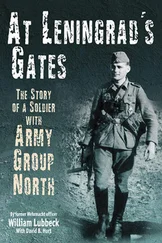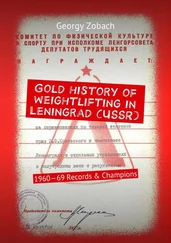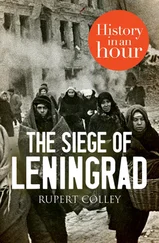This machinery, with its overlaps and overdependence on the faraway Kremlin and on Zhdanov’s office in the Smolniy, the gaunt former girls’ school that housed the Leningrad Party headquarters, stayed in place almost until the city was surrounded. The creation on 24 August of a Military Council of the Leningrad Front, bringing together Zhdanov and army group commander Marshal Kliment Voroshilov, streamlined decision-making somewhat, but the problem of overcentralisation remained. Four days earlier Zhdanov had tried to offload some of his mountainous responsibilities by creating a second committee, not including himself, to have charge over the construction of fortifications, weapons production and civilian military training. Stalin immediately telephoned to complain that the new body had been formed without his permission, and insisted that Zhdanov and Voroshilov join it. Zhdanov was thus left with two almost identical committees, the second of which he wound up again ten days later. Fat, asthmatic, balding, his khaki tunic littered with dandruff and cigarette ash, he thereafter made no further attempts to delegate. The saying of the time—that not a volt of electricity was allocated without his consent—was almost literally true. Typical, among the mass of trivial documents in the archives bearing his signature, is an order that one factory deliver another nine tanks of oxygen. {11} 11 Dzeniskevich, ed., Leningrad v osade , p. 151.
In a crisis, these men’s first instinct was to make arrests. At one o’clock on the morning of the Friday following the invasion, Yelena Skryabina and her husband were woken by the doorbell: ‘Anyone who lives in the Soviet Union knows what the purpose of such an especially long night-time ring is. It is the sound that means a search warrant or an order for arrest. But this time it turned out to be a summons from the draft board.’ Four days later she heard that a colleague had been less lucky: ‘They came at night, searched, found nothing, confiscated nothing, but took her away anyway. All I know is that the head of the institute where we both work is very hostile to her. It could be that the charge is “foreign ties”.’ Having spent longer than she meant to visiting the woman’s family, Skryabina returned home to find her own family convinced that she had been arrested too. {12} 12 Skrjabina, Siege and Survival , pp. 10–11 (1 July 1941).
The most predictable victims of the new wave of terror that broke over Leningrad on the outbreak of war were the city’s ethnic Germans. Descendants of German-speaking Balts, of the peasant settlers invited to plough the southern steppe by Catherine the Great, or of the numerous Germans who later came to make professional or service careers under the tsars, most had lived in Russia for generations and were indistinguishable from ordinary Russians save for their surnames. (Some tried to evade deportation by changing their names, others by pretending to be Jewish. {13} 13 O. I. Molkina, ‘Nemtsy v koltse blokady’, Istoriya Peterburga , 3, 2006, pp. 62–4.
) In a procedure already well honed in the Baltics and eastern Poland, they were given twenty-four hours in which to prepare for departure, in overcrowded goods wagons, into what was euphemistically called ‘compulsory evacuation’ to the Arctic, Central Asia, Siberia and the Far East. About 23,000 ethnic Germans and Finns were thus deported in the summer of 1941, and another 35,162 in March 1942, across the ice of Lake Ladoga. {14} 14 These numbers are derived from two NKVD documents. The first, in Dzeniskevich’s document collection Leningrad v osade , p. 442, of 1 October 1942, gives a total of 58,210 Finns and Germans deported to date. The second, in Nikita Lomagin’s document collection Neizvestnaya blokada , vol. 2, p. 37, of 4 April 1942, gives a total of 35,162 Finns and Germans deported during the second half of the previous month. The March 1942 deportations were mostly from towns and villages around the city.
Among them were the Tribergs, who lived on the Nevsky above what had once been the family business, the well-known ‘Aleksandr’ shoe shop. ‘They were just a family’, a neighbour remembered sixty years later:
They lived across the landing from us, on the same staircase of number 11 Nevsky Prospekt…
There were three children, two boys and a three-year-old girl. The two older ones, twelve and sixteen years old, sometimes used to come round. I took German lessons from their mother and aunt, such beautiful, elegant, intelligent women. The boys’ mother was especially kind, as well as highly intellectual. The elder son seemed to have inherited all his mother’s talents, and those of his father too, an engineer who spoke several European languages. I can say with certainty that the country lost a future scholar when it lost this young man.
More precisely, it lost them all. This is how it happened:
In 1938 they arrested the father
In 1941 they likewise arrested the mother
In 1944 she was shot.
The sons were left orphans with nothing whatsoever: all their possessions were confiscated. As a consequence, the older son died from starvation, since they had nothing to trade for bread. The younger son remained with his aunt and her little daughter. They were living shadows: a woman dying from starvation and two dystrophic [emaciated] children. In this condition they were deported from Leningrad—over the ice of Lake Ladoga.
During the journey the aunt died and the two surviving children were separated, never to meet again. Thus perished a family, as the neighbour drily noted ‘during the last war with the Germans, but not, strictly speaking, at the hands of the Germans’. {15} 15 Cynthia Simmons and Nina Perlina, eds, Writing the Siege of Leningrad: Women’s Diaries, Memoirs and Documentary Prose , pp. 37–9.
Also deported or arrested in large numbers (71,112 up to October 1942, according to security service documents) were ‘socially alien’ and ‘criminal-felonious’ elements among the general population. In practice this meant the same sorts of people targeted during the 1936–8 purges: members of the old bourgeoisie (‘de-classed elements’), peasants (‘former kulaks’), ethnic minorities (‘nationalists’), churchgoers (‘sectarians’), the wives and children of earlier repression victims (‘relatives of enemies of the people’), and anyone with foreign connections or knowledge of a foreign language (‘spy-traitors’). As usual it could be fatal simply to air a grumble or state the obvious—the Soviet Union’s first execution for ‘spreading defeatist rumours’ was recorded in Leningrad at the beginning of July. Hundreds of ordinary people were arrested for complaining about their working hours, predicting a bad harvest, or passing on news of the bombing of Kiev and Smolensk. {16} 16 Dzeniskevich, ed., Leningrad v osade , pp. 441–2; John Barber and M. Harrison, eds, The Soviet Home Front 1941–1945 , London, 1991, p. 66; Orlando Figes, The Whisperers: Private Life in Stalin’s Russia , pp. 385–6.
One of the most notable Leningraders to vanish at this time was the absurdist writer Daniil Yuvachov, better known by his pen-name Daniil Kharms. A relic of the avant-garde 1920s, he cultivated a range of eccentricities, studying the occult, drinking nothing but milk and parading the neighbourhood around his Mayakovsky Street flat in a deerstalker, shooting jacket, plus-fours, saucer-sized pocket watch and checked socks. His scraps of prose and dialogue—unpublished until the late 1980s—capture the drabness and mad bureaucratic violence of his times with nightmare black humour. In one, a man dreams again and again of a policeman hiding in the bushes, and gets thinner and thinner until a sanitary inspector orders him to be folded up and thrown out with the rubbish. In another, inquisitive old women lean out of a window, tumbling one after another to the ground. In a third, friends quarrel over whether or not the number seven comes before the number eight, until distracted by a child who ‘fortunately’ falls off a park bench and breaks its jaw. Kharms was arrested in August and sent to the psychiatric wing of the Kresty prison, where he died, of unknown causes, two months later. Why was he picked out? ‘Perhaps’, as the siege historian Harrison Salisbury put it, just because he ‘wore a funny hat.’
Читать дальше











